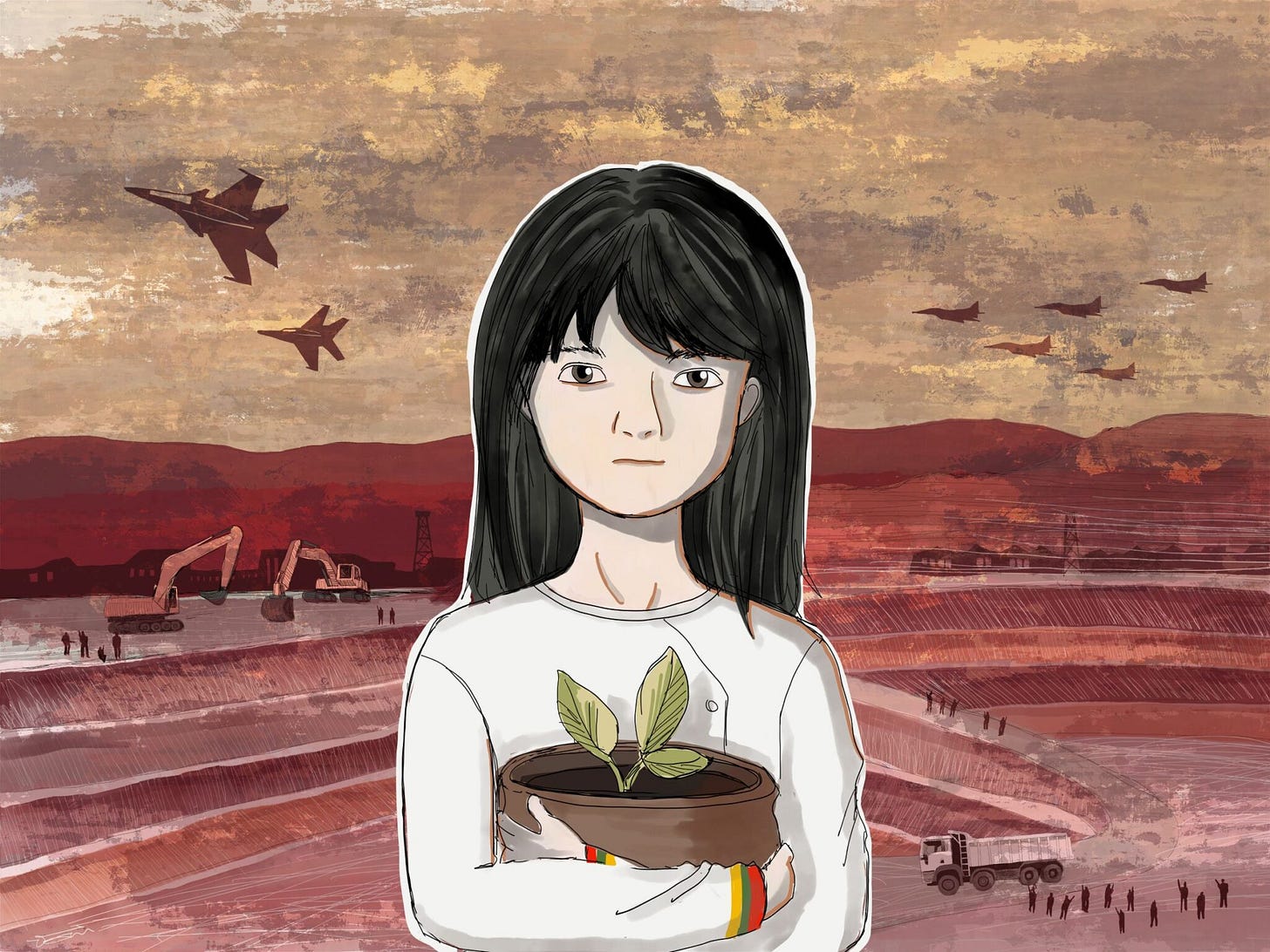The ‘F’ Word(s)
Famine, floods and food waste
Somalia
‘Famine’ is a terrible word. To me, not only is it associated with horrible suffering, but it also signifies our collective failure as a society.
How can we still have famine in this era of abundance? How can we send tourists to space when we can’t even feed millions of our human brethren? How is it that millions are struggling to put food on the table while I have left food on my plate after most of my meals for the past week? (For context, I’m in the US for a three-week exchange programme.)
Unfortunately, famine is projected in parts of Somalia, according to a new analysis by aid agencies and the United Nations.
The populations in Somalia’s Baidoa and Burhakaba districts “are projected to face Famine (IPC Phase 5) between October and December 2022 in the absence of significant humanitarian assistance reaching people most in need.”
In the global food security space, ‘famine’ is actually a technical term that means “an extreme deprivation of food, in which starvation, death, destitution and extremely critical levels of acute malnutrition are evident”. It is the highest point on a globally recognised scale.
"We are burying babies and watching with heartbreak as mothers cry because they don't know what to feed their children, now dying of hunger and thirst, and drought robs families of crops and livestock, their only source of income,” Daud Jiran, country director for international aid agency Mercy Corps, said in a statement.
“It is infuriating that we have once again reached the brink of famine when we have the tools to combat hunger and prevent starvation.”
According to the FAO, the UN food and agriculture agency, the people facing this are overwhelmingly livestock owners and rural families who have been battling unprecedented levels of drought, alongside skyrocketing food prices, conflict and COVID-19. So the tragedy isn’t just that it is happening – it is that we knew it was likely to happen.
“That was already a disaster and required a strong response,” a senior UN official told The New Humanitarian. “Famine is a failure of the system.”
Pakistan
Another ‘F’ – floods – are wreaking havoc in this country and the consequences could be terrible on multiple fronts – food security, health and economy, just to name a few.
More than 1,200 people have reportedly died and over 1.1 million houses have been damaged or destroyed, according to the UN, and national authorities reported that more than 33 million people have been affected.
This is a nation of some 220 million people, which means 15% of its population was impacted. The disaster damaged more than 1.2 million hectares of agricultural land in Sindh province, and many households in Balochistan who rely on keeping livestock for income reported losing at least one livestock asset, the FAO said.
Even before the latest devastating deluge, nearly half a million people were “only one step away from catastrophic levels of food insecurity”, the agency added. Let us hope the country won’t be dealing with the other ‘F’ as well.
This week’s issue of Cropped, Carbon Brief’s newsletter, has a good breakdown of the key issues and concerns, while The New Humanitarian raised important questions around Pakistan’s disaster preparedness in the face of climate change.
Musings on food waste and nutrition
This is by no means a new topic, but I’m going to say it anyway.
I’m currently in the U.S. – Washington, D.C., to be exact – for a three-week exchange programme on how the country is looking to tackle its climate challenges, and one thing that keeps bugging me is the amount of food that’s served at restaurants.
Whether it’s appetisers, mains or desserts, the servings are often monstrously big. I haven’t been able to finish most of my meals, and the last time I checked, I have a pretty healthy appetite.
I know my meals don’t have much to do with what’s happening in Somalia or Pakistan, but I still can’t help wondering how much emissions and food waste we can reduce, not to mention obesity figures, simply by adjusting portion sizes in America. Surely this must be a low-hanging fruit?
Five tips for helping Myanmar’s environmental defenders
I wrote an op-ed for Mekong Eye on concrete ways donors and organisations can support Myanmar’s environmental activists.
I wrote it because I was hearing from friends and sources about the challenges they are facing, and we are all frustrated at seeing little concrete action from the international community beyond a lot of hand-wringing.
I wanted to remind the world of what’s still happening in Myanmar, that the junta’s atrocities affect both citizens and ecosystems, and there are things that can and should be done.
The importance (or not) of narratives
Can we use storytelling to spur climate action? Do catchy phrases help or harm climate goals? How much simplification is enough and how much is oversimplification? How can we share science in a way that makes it understandable and actionable?
Well, there are no easy answers but Sven Egenter, the executive director Clean Energy Wire, and I try to answer these questions on the Accelerating Climate Solutions podcast from Foundations Platform F20 and the Global Alliance for the Future of Food.
Do have a listen and tell me what you think.
On a more positive note . . .
I feel very privileged to be meeting really interesting folks working on climate change and/or food as part of the three-week exchange programme I mentioned above. These include experts as well as my fellow exchange-mates.
One of the things we’ve been discussing at length this week is the Inflation Reduction Act, which Biden signed into law just last month, and its impacts.
As many people have already pointed out, the bill is the largest-ever investment the U.S. has made to tackle climate change, and as with many of America’s policies, the spillover effects are likely to go beyond its borders.
Here is a great breakdown of what the bill promises, how much and by when. There’s a specific section on agriculture on page 19.
It’s not perfect – green campaigners have criticised the windfall for carbon capture and storage, for example – but it’s a start.
Karl Hausker, a senior fellow in the Climate Program at the World Resources Institute (WRI), says it is important to be pragmatic when it comes to decarbonisation.
“In this technology casino, the right approach is to spread our chips across many technologies,” he told us.
“By mid-century and beyond, we will need to achieve net negative CO₂ emissions to compensate for “overshoot” of safe CO₂ concentrations and to balance the warming due to continued emission of non-CO₂ gases. The non-CO₂ gases are very hard to eliminate completely.”
He explained his thought process in greater detail in this piece, which is well worth reading.
As always, have a great weekend! Please feel free to share this post and send tips and thoughts on Twitter @thinink, to my LinkedIn page or via e-mail at thin@thin-ink.net.







